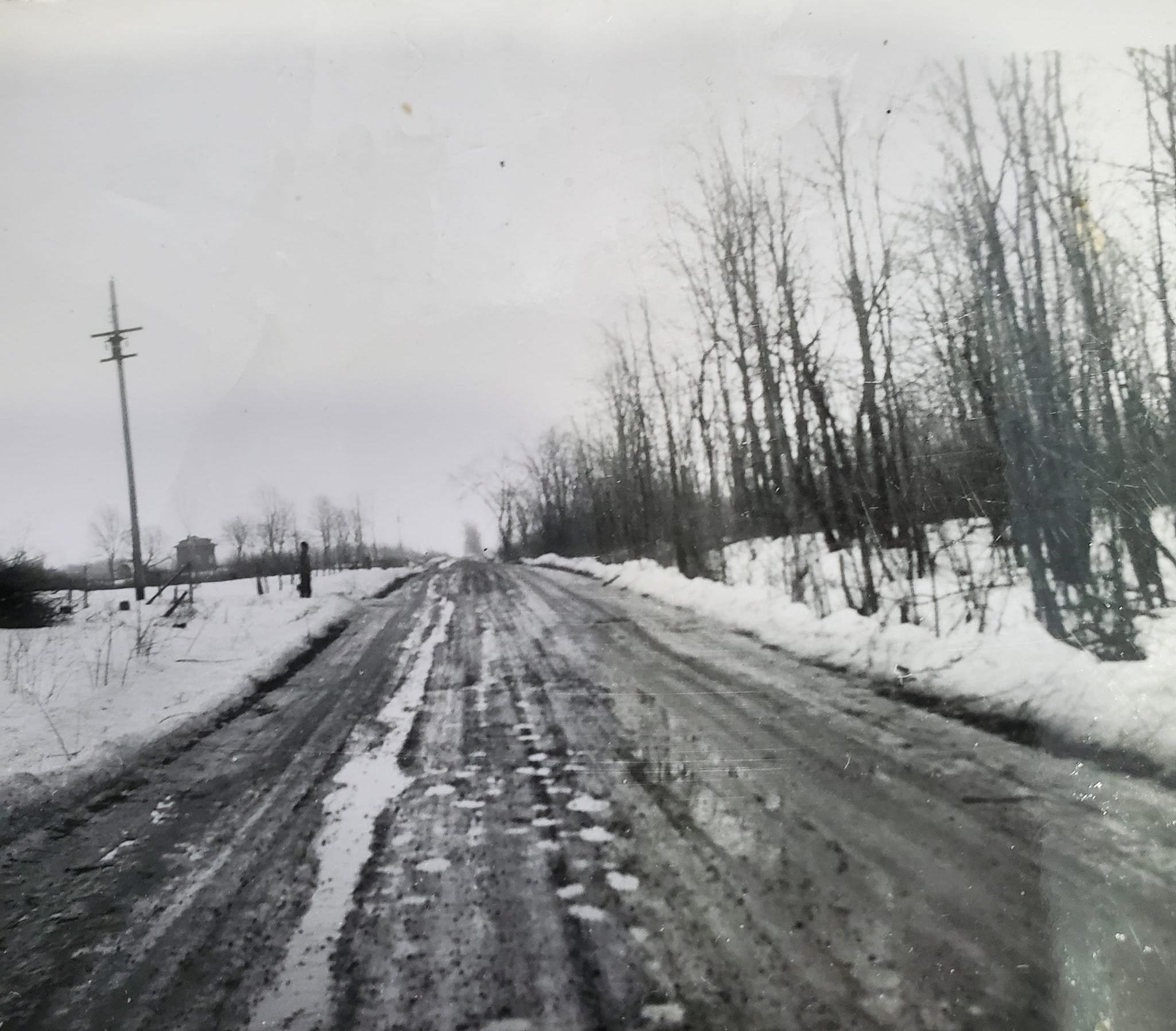Childhood hijinks
A Kahnawa’kehró:non family are carried by horse and buggy through Kahnawake in the winter of 1927. (Courtesy: Kanien'keháka Onkwawén:na Raotitióhkwa Language and Cultural Center)
Story told by Stephen Silverbear McComber
I think the road from Kateri School to the hospital was the only road that was paved here in Kahnawake. There were a lot of dirt roads, a lot of hills. There were a lot of old houses.
I remember a lot of the houses didn’t have good insulation, and in the wintertime there would be giant icicles on many houses - some right to the roof, right from the ground. I remember seeing that a lot. When we were kids, in our neighbourhood there was always a lot of snow. In the winter we used to jump off the roofs of old houses into big piles of snow.
The largest snow banks at that time were at Kateri school because they ploughed around it. That would make a big hill, and everybody that was around the neighbourhood would slide there.
I also remember at that time we used to hang on the bus. We would run behind the bus, and when it stopped, you’d go and hold onto the bumper and you’d go for a ride. And the milk truck. I don’t remember ever hanging on the milk truck, but I did hang on the bus a couple times. That was fun and exciting in those years.
One time, there were three of us, and in the spring after the ice breaker came, we were walking on big pieces of ice. That we shouldn’t have been doing! Actually, it was Father Lajoie that came - he got a cord and he threw it to us and he pulled us to come up the wall.
KANIEN’KÉHA VERSION
↓
KANIEN’KÉHA VERSION ↓
Tsi ní:ioht tsi iakwatshwà:thahkwe’ shiiakwaksa’okòn:’a
Highway 207 is pictured covered in snow in the early 1950s. (Courtesy: Herby Bordeau)
Stephen Silverbear McComber ROKÁ:RATON
Í:kehre’ Katerí: tsi ionterihwaienstáhkhwa’ tsi ní:iore tsi iakenheion'taientáhkhwa’ khók tsi kahnehtóntion iohá:te'. É:so shes o’kèn:ra iohaténion, nok é:so iononténion. É:so shes kanonhsakaiónhshon.
Kè:iahre’ é:so kanónhsake iah teioianeréhne’ tsi ní:tsi tekanonhsanéten’, nok akohserà:ke nikahá:wis kawisowá:nen’s kanonhsa’kéhshon iowisen’tónnion – ótia’ke tsi tkanonhsó:ron tsi niió:re nonhontsà:ke tsi ní:iens. Kè:iahre’ é:so ne wa'katkáhtho'. Shiiakwaksa’okòn:’a, tiótkon é:so shes kanié:ien' tsi teiakwanonhsanekhánion. Akohserà:ke nikahá:wi kanonhsà:ke shes nieniakwaráthen' sok kowá:nen tsi ioniehtatstóhkote' ia'teniakwani'tsónhkwahkwe'.
Tho shikahá:wi Katerí: tsi ionterihwaienstáhkhwa’ nón:we naonhà:’a tkowá:nen ioniehtatstohkó:ton ase’kénh wa’thatiniehtohtáhrho’ ne tho. Nè:’e enkanontowáhnhahte’, tánon’ akwé:kon aktóntie’ thati’terón:ton tsi teiakwanonhsanekhánion enthontiá:nenhte’.
Louis Beauvais pulls a shovel along Veterans Boulevard during winter in Kahnawake. Taken in the 1950s. (Courtesy: Kanien'keháka Onkwawén:na Raotitióhkwa Language and Cultural Center)
Kè:iahre’ ò:ni’ tho nón: shontakahá:wi ohnà:ken tsi iakoia’takarénie’s shes iakwatia’taniiónthahkwe’. Ohnà:ken na’ka’seréhtati teniakwaráhtate’, tánon’ nó:nen tenká:ta’ne’, enhsatia’taniión:ten’ tánon’ ensahonwì:sere’ ken’ nikarihwésha. Nok ne kanon’takarénie’s kà:sere, iah teskè:iahre’ nonwén:ton ne tho aonkwatia’taní:ionte', nek tsi tóhkara nieioiénhton ne iakoia’takarénie’s wakatia’taní:ionte'. Ion’wesénhne' ne tho shiiohseratátie's.
Énska se’ ken nè:'e, áhsen niiatiónhne', nok kanenna’kè:ne nikahá:wi shontóhetste’ ne tekawisahríhtha’ kahonwé:ia', kowá:nen owisa'kéhshon iákwene'. Tóhsa tho naionkwaié:renke’! Kwah Lajoie ne ratsihénhstatsi tà:re’, wahahseriie’takóha’ tánon’ tahshonkwatiéhten’ sok tahshonkwaia’tatihéntho’ tsi wahsónhtote wa'akwaráthen’.
Edited by: Marcus Bankuti, Local Journalism Initiative Reporter
Translation by Sahawisó:ko’ Arquette



